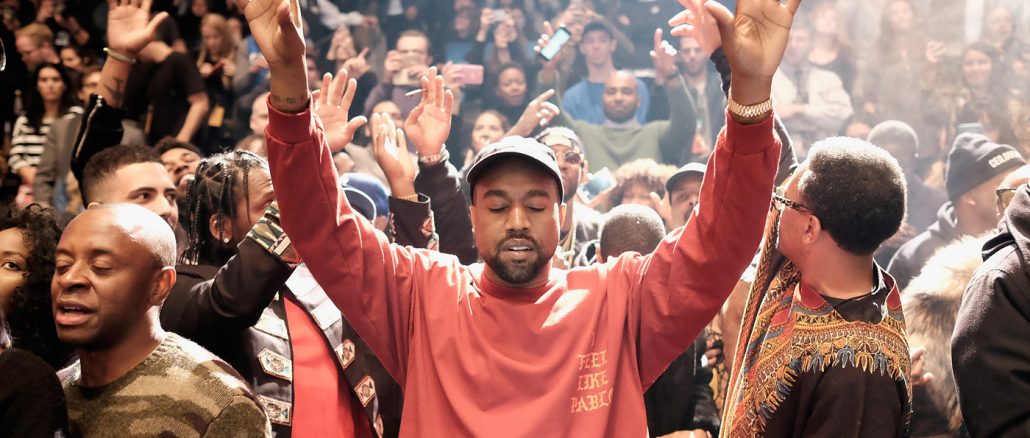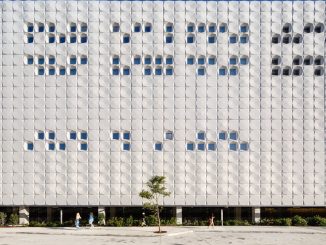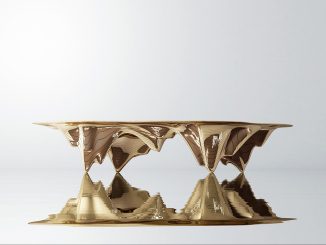
On Sunday evening, rapper Kanye West took to Twitter to announce the creation of a new architecture wing for his popular Yeezy company. With “Yeezy Home,” West is “looking for architects and industrial designers who want to make the world better,” leading to a flurry of speculation, excitement—and a certain amount of ridicule—across the online world.
Whether or not you welcome the news, or believe it will be realized, there is undoubtedly an interesting relationship between West and architecture which merits exploration, and which may provide clues as to Yeezy Home’s future, if indeed it has one. With that in mind, we dive into three questions: How likely is Yeezy Home to happen? What might the architecture of Yeezy Home look like? And how can architects get involved?
How likely is Yeezy Home to happen?
we’re starting a Yeezy architecture arm called Yeezy home. We’re looking for architects and industrial designers who want to make the world better
— KANYE WEST (@kanyewest) 6 May 2018
Apart from West’s Sunday evening tweet, there has been no official announcement by Yeezy, and no further details on their architectural ambitions. Looking to history, West’s design-related announcements have a mixed picture of bearing fruition.
In a January 2016 interview on BBC Radio 1, West announced his interest in collaborating with IKEA to “make furniture for interior design, for architecture.” Despite the immense public intrigue, West’s offer fell flat, as exemplified by IKEA Australia’s ironic response.
One month later, his call for Facebook founder Mark Zuckerberg to invest $1 billion in his creative ideas, from holograms to hovercrafts, went unanswered. Perhaps the reason was pointed out by Stephen Colbert: If you are going to ask the CEO of Facebook for $1 billion, don’t do it via Twitter.
And then there is West’s recent wild claims about Yeezy. Since returning to Twitter from a one-year exile, West has made some bold claims about his apparel business. Likening himself to Steve Jobs and Henry Ford, West declared Yeezy would be “working with the most genius-level talents and creating product at an affordable price.” Given the current three-figure price of West’s product line, the tweets are a difficult knot to untie.
there’s been a lot of fake news so I just wanted to give you the facts. Yeezy will become the biggest apparel company in human history by working with the most genius level talents and creating product at an affordable price. I hired the head of supply chain from the Gap.
However, for those excited by West’s announcement, there is hope. In 2012, a similar sequence of events occurred when West announced via Twitter the creation of his design company DONDA, named after his late mother, which he tweeted would assemble “a team of architects, graphic designers, directors, musicians, producers… and put them in a creative aspect to bounce their dreams and ideas.”
While ridiculed at the time, the entity has been credited with the creation of West’s “Cruel Summer” seven-screen film, the marketing campaign for West’s Yeezus album, and album covers for Lil Wayne, Big Sean, and other music giants. History offers a mixed reading of West’s design ambitions, but for architects excited about the possibility of working with Yeezy Home, DONDA offers precedent that their day might come.
What might the architecture of Yeezy Home look like?
West has an undeniable interest in architecture, with a litany of previous statements and collaborations offering clues to what Yeezy Home might create.
In 2015, Vogue gave an insight into West’s New York apartment, a scheme which inspired his Yeezy collection. Designed by Claudio Silverstrin, the Soho apartment features neutral, modernist tones of limestone, pearwood, and stone. In an interview with Vanity Fair, West expressed his love for the apartment: “stressing the importance of color, the importance of that to our sanity, these Zen monochrome palettes… I love those types of palettes and that’s my opinion,” he explained. Perhaps the Yeezy Home designs of the future will reflect this modernist, unisex, somewhat minimalist ethos.
However, evidence also exists that West might tackle broader issues through design. In 2013, West paid a visit to the studios of the Harvard Graduate School of Design, standing on a table to make an impassioned speech to students about the value of architecture, stressing that the world’s issues can be tackled through an architectural lens:
I just wanted to tell you guys: I really do believe that the world can be saved through design, and everything needs to actually be “architected”…I believe that utopia is actually possible—but we’re led by the least noble, the least dignified, the least tasteful, the dumbest, and the most political… I really appreciate you guys’ willingness to learn and hone your craft, and not be lazy about creation.
This is not an isolated incident. In a BBC interview in 2013, West riffs about his desire to help architects confront big ideas, describing the profession as world builders, before famously declaring “this is the reason why I’m working with five architects at a time.”
West has also associated himself with some high-profile architects. In 2013, he shared a stage with Jacque Herzog of Herzog & de Meuron, at an event in Miami’s Design District. He has also exhibited a working relationship with OMA founder Rem Koolhaas. In 2013, West was interviewed by Tomas Koolhaas for the production of the documentary “REM,” in which he discussed the impact Koolhaas had on his interest in architecture, influenced by the OMA-designed temporary pavilion at the 2012 Cannes Film Festival, which screened West’s debut short film “Cruel Summer.”
I love Rem’s work… I just like the fact that I was able to take my position as a musician and be able to invest in a project with a company to that level, and I learned so much from doing that, versus what other people in my position maybe would have done with their money.
Given West’s impassioned belief that architecture can change the world, and that everything should be “architected” to the “doped” degree, perhaps Yeezy Home will offer a new intersection between architecture, politics, and visionary theory, one which has often featured in both OMA and Koolhaas’ output?
How can architects get involved?
Until further official details are released, there is no clear answer. With the announcement of DONDA in 2012 came an email address for interested architects to submit ideas or examples of work for West’s team to consider. Until history repeats itself, your best hope is to log onto Twitter, find the Yeezy Home tweet, reply with your inner Kanye, and hope for the best—or to try something else similarly bold.
For architects who do hope to play a part in West’s new venture, the rapper has provided more than enough material to understand his architectural tastes and his ambitious outlook on what architecture can be. To many of us, the chance of working with West may seem distant, but as the rapper once said, “reach for the stars so if you fall you land on a cloud.”
So where does this tweet and analysis leave us? As with much news surrounding Kanye and his life, it leaves us with a sense of either wonder, confusion, or unease. West has had a long illustrious career, one with many chapters left. His announcement may be met with ridicule by some, but to dismiss his intentions out of hand runs the risk of ignoring a long, intriguing, and worthwhile contribution to the world of design, creativity, and architecture.
This article was written using information sourced from:
The Guardian, The Washington Post, Complex, Architect Magazine, Vogue, TIME, Vanity Fair, and Kanye West via Twitter.
For Architects Only? How Kanye Exposed Architecture’s Bias
When Kanye West spoke with students at my alma mater on Sunday evening, he said “I really do believe that the world can be saved through design, and everything needs to actually be ‘architected.'” In the social media frenzy that followed, a recurring response that I saw on architecture-centric sites was to snicker at West’s use of the word “architect” as a verb.
Keep Talking Kanye: An Architect’s Defense of Kanye West
I may be in the minority among my peers, but I want Kanye West to keep talking. Despite the many who despise, disparage or dismiss him-unwilling or unable to properly digest what he’s saying, consuming bite-sized quotes and late-night parodies instead of engaging him in intellectual discourse-I want him to keep talking.



Be the first to comment